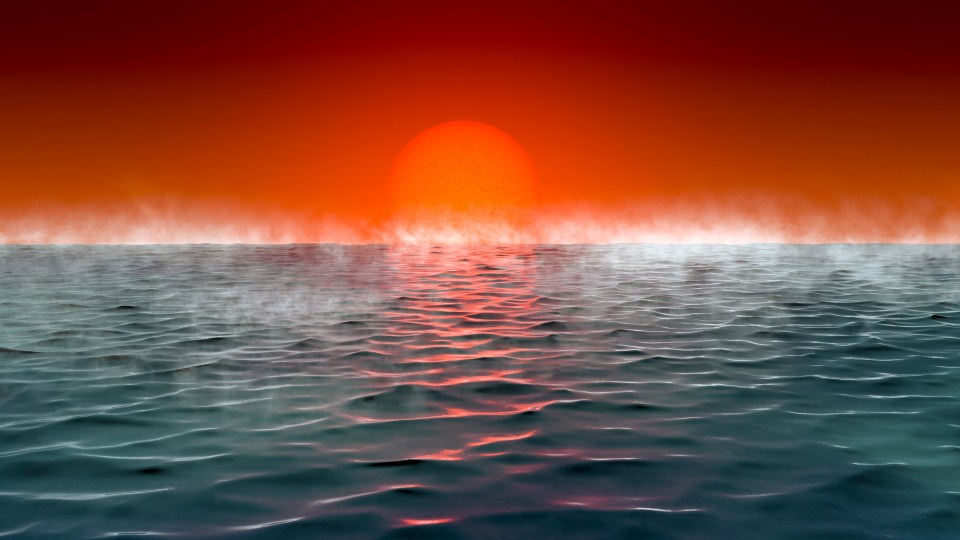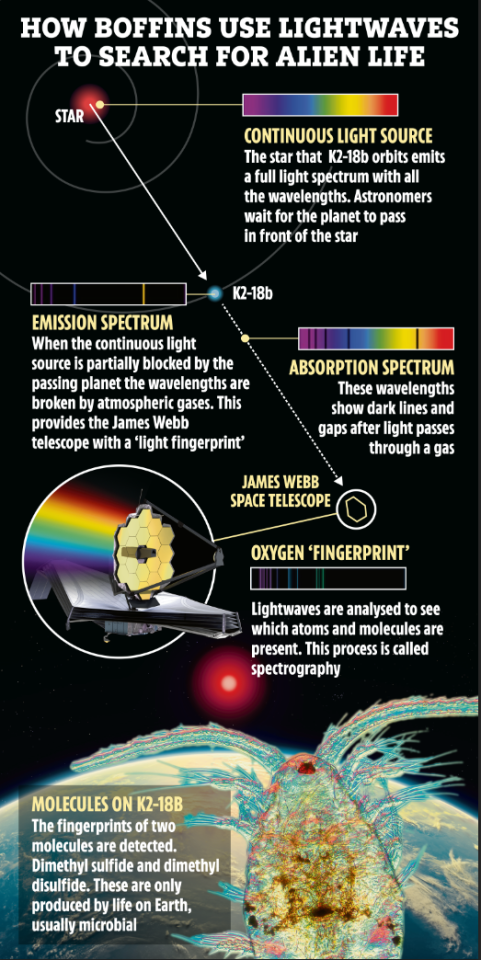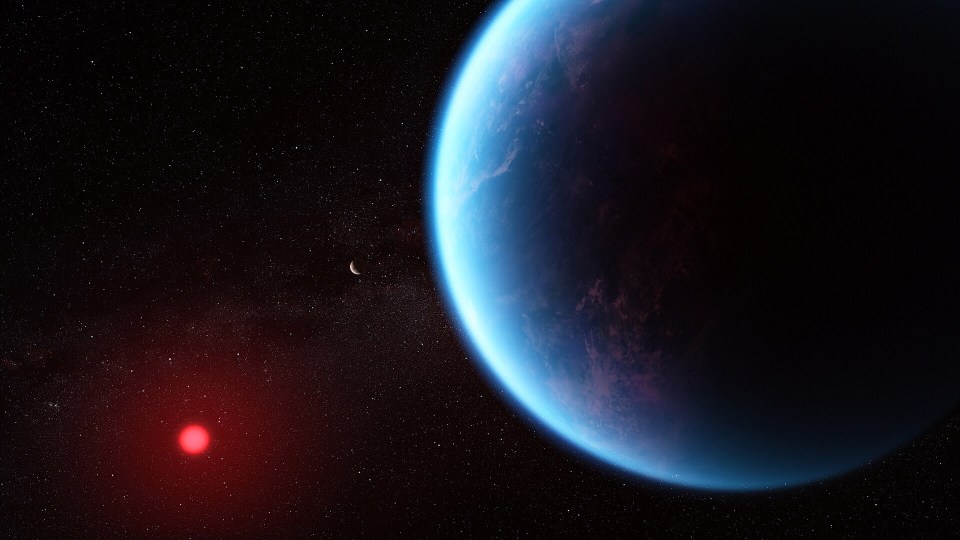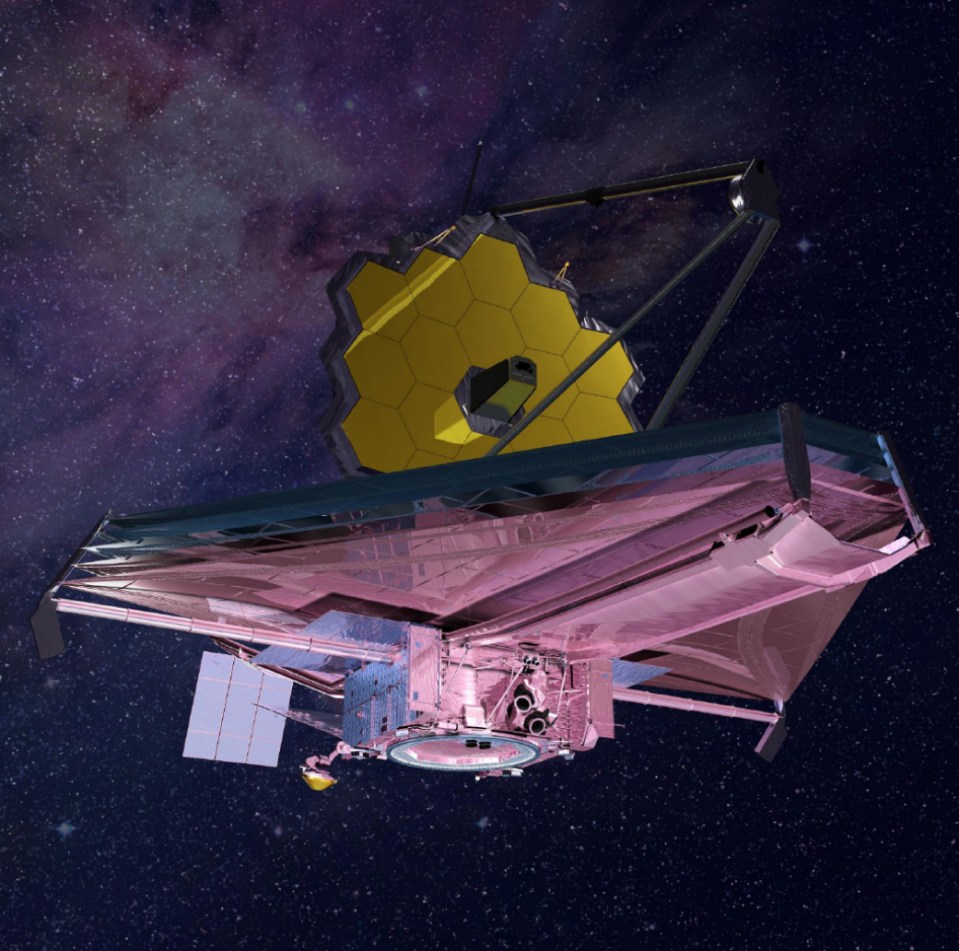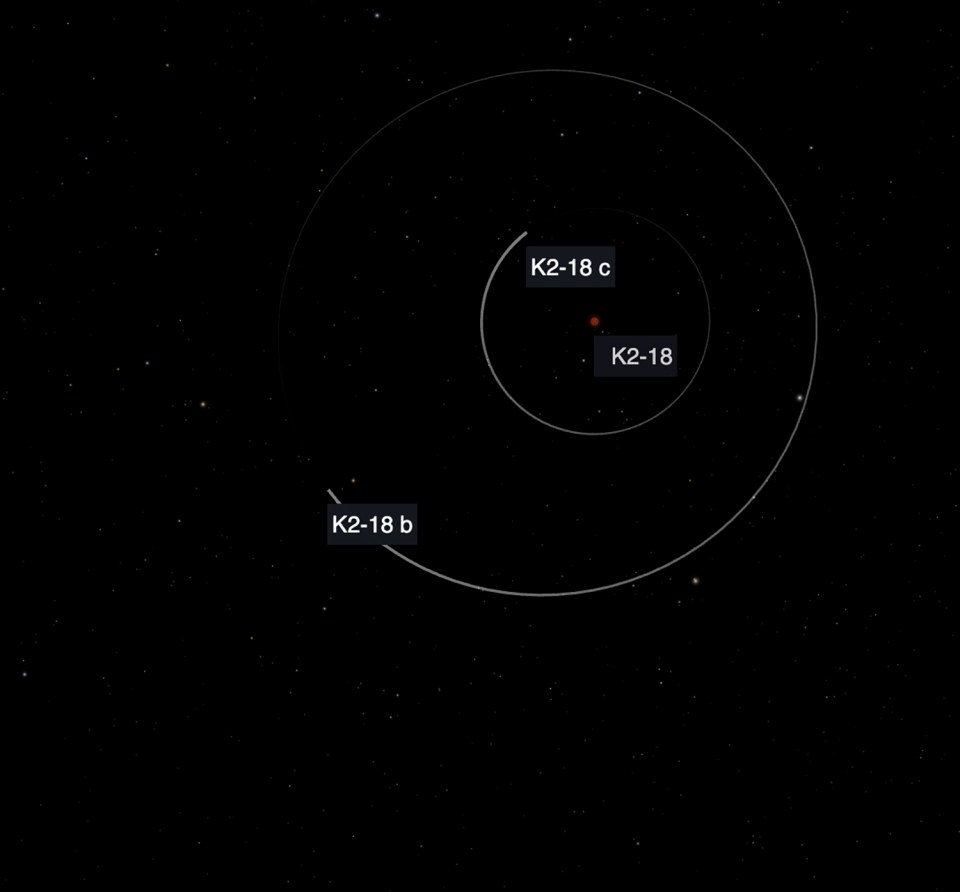ALIENS might be lurking on a far-off ocean planet in an “astounding” discovery, Britain’s brainiest scientists have told The Sun.
Top alien-hunting astronomers at the University of Cambridge say they’re now 99.7% confident they’ve spotted the best-ever-seen signal of biological activity – and say the planet may be “teeming with life”.
It’s taking place on a distant alien world called K2-18b, which is 120 lightyears away and roughly 2.5x the size of Earth.
Astronomers have picked out a molecule called DMS in the planet’s atmosphere. On Earth, it’s produced by the tiny algae that live in our seas. These ‘phytoplankton’ are microscopic and can’t be seen with the human eye – but in large numbers, show up as coloured patches on water.
And similar alien lifeforms might be churning it out on K2-18b.
Lead scientist Professor Nikku Madhusudhan said “there is no mechanism in the literature that can explain what we are seeing without life”.
He told The Sun: “It’s a question humanity has been asking for thousands of years. It’s a shock to the system. It takes time to recover from the enormity of it.”
SCANNING THE SKY
The astronomers used data from the James Webb Space Telescope, which launched on Christmas Day in 2021.
They’ve spotted fingerprints of two molecules: dihmethyl sulphide (DMS) and/or dimethyl disulphide (DMDS) in the planet’s atmosphere.
These are only produced by life on Earth, usually microbial.
And the results are so convincing that there’s just a “0.3% probability they occurred by chance”.
It’s all taking place on a so-called Hycean world, which planet with a watery ocean and a thick hydrogen atmosphere.
Hycean comes from combining “hydrogen” and “ocean” together.
“If it is indeed a Hycean world, the planet would be covered in oceans,” Professor Madhusudhan told The Sun.
“We currently don’t know what the temperature of those oceans would be.
“But we expect it to be slightly warmer than Earth.
“On Earth, extremophiles have been known to survive at very high temperatures, so that is not itself an issue.”
WATCH IT GO BY!
We can’t directly see K2-18b because of how close it is to the host star.
So scientists have to use a genius technique to work out what’s going on there.
They watch the star that K2-18b is orbiting, and wait for the planet to pass across its face.
By analysing the star’s light during this “transit”, JWST can pick up the drop in the star’s brightness.
A small fraction of the starlight passes through the planet’s atmosphere.
And the absorption of this starlight in the planet’s atmosphere leaves “imprints” that astronomers can use to work out which gases are present.
Not only did Madhusudhan’s team spot DMS – a biosignature – in the atmosphere, they found it in huge quantities.
WHAT IS A HYCEAN WORLD? THE STORY OF K2-18b SO FAR
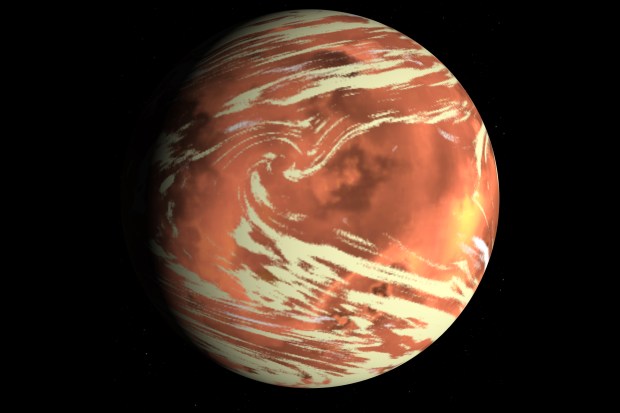
Here’s what you need to know…
A Hycean world is a type of exoplanet – or planet outside of our solar system.
Specifically, it’s a planet that has both a liquid water ocean and a hydrogen-rich atmosphere.
That’s where the name comes from: Hycean is “hydrogen” and “ocean” combined.
It was coined as a term in 2021 by astronomers at the University of Cambridge.
Scientists think they’re a top location to hunt for alien life.
They expect life on Hycean worlds to be aquatic – that means no land mammals like here on Earth.
One of the best candidates for life is K2-18b, because it appears to have both a Hycean atmosphere and biosignatures, or signs of life.
The planet is 120 lightyears away from Earth, orbiting the red dwarf start K2-18.
It’s about 2.6 times bigger than Earth and has a 33-day orbit.
K2-18b gets about the same amount of sunlight from its star as Earth receives from the Sun.
It was first discovered in 2015, and water vapour was found in the atmosphere in 2019.
Then in 2023, the James Webb Space Telescope picked up carbon dioxide and methane in the atmosphere.
Scientists later predicted that we might find potential biosignatures linked to life in the water ocean they believe to be on the planet.
And in April 2025, scientists were finally able to say with 99.7% certainty the presence of a biosignature: a type of molecule called DMS, which is produced by marine phytoplankton here on Earth.
It might mean that similar lifeforms exist on K2-18b too.
Picture Credit: Nasa
Normally DMS and DMDS are found in Earth’s atmosphere at rates of about one part per billions.
But on K2-18b, levels are thousands of times higher – more than 10 parts per million.
“Earlier theoretical work had predicted that high levels of sulfur-based gases like DMS and DMDS are possible on Hycean worlds,” the Cambridge professor explained.
“And now we’ve observed it, in line with what was predicted.
“Given everything we know about this planet, a Hycean world with an ocean that is teeming with life is the scenario that best fits the data we have.”
He added: “This has been one of the most fundamental questions that we as a species have asked for thousands of years,” Madhusudhan said.
“Everyone would agree that at some point in their lives, they would look at the night sky and ask: are we alone?”
ULTIMATE PROOF
But there’s still more work to be done.
The certainty level is currently three-sigma, which is 99.7%.
Madhusudhan wants to get more analysis time to reach the coveted five-sigma, which means there’s just a 0.00006% probability the results occurred by chance.
“The observation was about eight hours of JWST time,” Madhusudhan told us.
He said they’d need two or three more transits to be certain, which is 16 to 24 hours.
“We have to formally apply for JWST time and there will be a selection process,” said Madhusudhan, speaking to The Sun.
“And if they’re convinced by the case, it’ll be accepted and then the observations will be made.
You’re faced with potentially one of the biggest landmarks in the history of science.
Professor Nikku Madhusudhan
“But these observations are non-trivial to make. They don’t happen very frequently, especially with JWST.
“There are only around four windows of observation every year. So if these observations are approved, this would happen potentially over the next year.”
It’s also possible that the cause of the DMS is non-biological, but Madhusudhan says there’s no known mechanism for this right now.
MAJOR DISCOVERY
The British-Indian professor – who is known for coining the term “Hycean world” – described it as an “astounding” finding.
“You’re faced with potentially one of the biggest landmarks in the history of science,” Madhusudhan told The Sun.
“It’s not my intention to make it sound grand, but there is no other way to put it.
“What is the importance of this result? Think about us as a civilisation, as a society, our evolution as a society. You’ll see that it’s right up there.
“If this ends up being true, we can’t hideaway from that fact. We can deny it, but it will come back.”
He added: “The big question in mind is whether we, as a species, are prepared to find life as we don’t know it.”
The research was published in the Astrophysical Journal Letters.
EXOPLANETS – EXPLAINED!

Here’s what you need to know…
- An exoplanet is a planet that is located outside of our Solar System and one that is orbiting its own star, as Earth orbits the Sun
- They are very hard to see with telescopes because they are often hidden by the brightness of their star
- Nasa sent the Kepler space telescope into orbit with the purpose of finding Earth-sized exoplanets that might support life
- More than 5,500 exoplanets have been discovered so far and more missions to find even more exoplanets are planned
- A good way to spot an exoplanet is to look for “wobbly” stars because a disruption to starlight can indicate that a planet is orbiting it and blocking its light intermittently
- Expoplanets are very common in the universe and the more we find that look like Earth, the closer we get to knowing whether Earth is the only life-bearing planet
Picture Credit: NASA/JPL-Caltech


